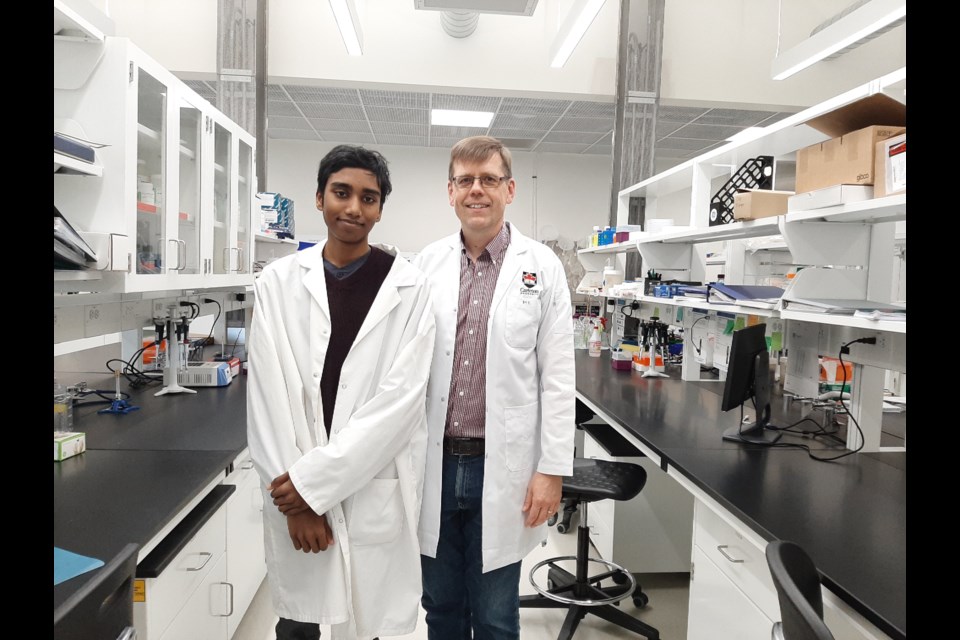A fourteen-year-old boy who has just moved to Sudbury is hoping to connect with Health Sciences North and the Northern Ontario School of Medicine to show off his new LIGHT IR device, which he said is designed to to detect cancer cells far more quickly than any other device.
Aaryan Harshith, who is soon to enter Grade 10 in Sudbury, said he came here earlier in the summer from the Ottawa area because his parents moved for work reasons.
Last year, during his first year of secondary school, Harshith got professional help in developing the light device from the MakerSpace Program at Algonquin College through its Office of Applied Research, Innovation and Entrepreneurship.
He was given expert help on creating circuit boards as well as 3D-printing for some components of the light probe.
Want to read more stories about business in the North? Subscribe to our newsletter.
Harshith said he developed the light device because members of his extended family had suffered and died from cancer. He became curious about cancer treatments.
"Cancer runs in my family,” he said. “I've lost relatives to cancer. It is pretty frustrating to see sometimes because almost everything we have (in equipment) in the medical field is pretty close to perfection.”
For most types of medical equipment, he said, we are at the point where only minimal improvements can be made. One aspect of cancer treatment that he felt was flawed was the amount of time it takes for cancer cells to be correctly identified, especially during surgery.
He said that requires cells to be taken and sent to the pathology lab for confirmation that cells are cancerous. Harshith said his LIGHT IR device is a portable spectroscopy machine that allows for quicker detection of cancer cells.
"I wanted to condense that down to a single probe that would be in the hands of a surgeon," he said. "It detects cancer real time, faster than the lab, just as accurately as anything else would."
He said tests done so far on the device show it to be more than 99 per cent accurate in detecting cancer cells.
"The simplest way to explain it is that cancer reflects light differently than healthy cells would," he said. "It allows them to differentiate between healthy cells and what could potentially be cancerous."
At this point, Harshith said the product is developed as much as it can be, but testing will be required to work out any bugs.
"It's not as much development as it is testing,” he said. “When it comes to a medical device, it is more testing than anything. The development doesn't take that long. I would say I should have it fully fleshed out, probably in the next one or two years.”
Now living in Sudbury, Harshith said he will be networking as much as possible with individuals in the medical and innovation sectors to see how he can move the project forward.
"I am looking at getting grants from the Government of Canada as well as other institutions,” he said. “I have just filed a patent.”
Harshith added he had always been a keen mathematics student, but in recent years, he has taken a greater interest in science. When asked if he might want to pursue a career in medicine or bio-engineering, Harshith said no.
"More than anything I want to go into entrepreneurship."
- Sudbury.com




